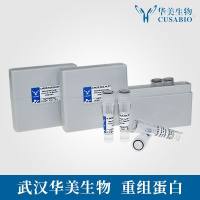Synthesis of a 2‐Selenothymidine Phosphoramidite and Its Incorporation into Oligodeoxyribonucleotides
互联网
- Abstract
- Table of Contents
- Materials
- Figures
- Literature Cited
Abstract
The detailed synthetic protocol for a 2?selenothymidine phosphoramidite and its use in preparing Se?derivatized oligonucleotides are described here. The Se?modified phosphoramidite synthesis was achieved by activating a 2?thiothymidine derivative, followed by introduction of selenium functionality. The coupling reaction yield of the 2?selenothymidine phosphoramidite during solid?phase synthesis is high (>95%), and the oligonucleotides containing the 2?selenothymidine derivatization are stable. Curr. Protoc. Nucleic Acid Chem. 42:1.23.1?1.23.13. © 2010 by John Wiley & Sons, Inc.
Keywords: nucleic acid; selenium; derivatization; base pairing; X?ray crystallography
Table of Contents
- Introduction
- Basic Protocol 1: Preparation of the 2‐Selenothymidine Phosphoramidite
- Support Protocol 1: Synthesis of Iodopropionitrile
- Basic Protocol 2: Synthesis, Purification, and Characterization of Oligonucleotides Containing 2‐Selenothymidine
- Commentary
- Literature Cited
- Figures
- Tables
Materials
Basic Protocol 1: Preparation of the 2‐Selenothymidine Phosphoramidite
Materials
Support Protocol 1: Synthesis of Iodopropionitrile
Materials
Basic Protocol 2: Synthesis, Purification, and Characterization of Oligonucleotides Containing 2‐Selenothymidine
Materials
|
Figures
-
Figure 1.23.1 Synthetic scheme of the 2‐selenothymidine phosphoramidite (S.6 ) and the Se‐DNAs (S.7 ). View Image -
Figure 1.23.2 MALDI‐TOF mass spectrum of 2Se‐T 9‐mer (5′‐ATGGSeTGCTC‐3′); C88 H104 N32 O53 P8 Se, calculated: 2794.8, observed: 2794.2. View Image -
Figure 1.23.3 UV melting curves. (A ) Duplex of native DNAs 5′‐CTTCTTGTCCG‐3′ and 5′‐CGGACAAGAAG‐3′ ( T m = 42.6°C). (B ) Duplex of Se‐DNA 5′‐CTTCTTSe GTCCG‐3′ and native DNA 5′‐CGGACAACAAC‐3′ ( T m = 42.2°C). View Image
Videos
Literature Cited
| Literature Cited | |
| Basu, A.K., Loechler, E.L., Leadon, S.A., and Essigmann, J.M. 1989. Genetic effects of thymine glycol: Site‐specific mutagenesis and molecular modeling studies. Proc. Natl. Acad. Sci. U.S.A. 86:7677‐7781. | |
| Carrasco, N. and Huang, Z. 2004. Enzymatic synthesis of phosphoroselenoate DNA using thymidine 5′‐(α‐P‐seleno)triphosphate and DNA polymerase for X‐ray crystallography via MAD. J. Am. Chem. Soc. 126:448‐449. | |
| Cate, J.H., Gooding, A.R., Podell, E., Zhou, K., Golden, B.L., Kundrot, C.E., Cech, T.R., and Doudna, J.A. 1996. Crystal structure of group I ribozyme domain: Principles of RNA packing. Science 273:1678‐1685. | |
| Caton‐Williams, J. and Huang, Z. 2008. Synthesis and DNA‐polymerase incorporation of colored 4‐selenothymidine triphosphate for polymerase recognition and DNA visualization. Angew. Chem. Int. Ed. Engl. 47:1723‐1725. | |
| Drew, H.R., Wing, R.M., Takano, T., Broka, C., Tanaka, S., Itakura, K., and Dickerson, R.E. 1981. Structure of a B‐DNA dodecamer: Conformation and dynamics. Proc. Natl. Acad. Sci. U.S.A. 78:2179‐2183. | |
| Eoff, R.L., Irimia, A., Egli, M., and Guengerich, F.P. 2007. Sulfolobus solfataricus DNA polymerase Dpo4 is partially inhibited by “Wobble” pairing between O6‐methylguanine and cytosine, but accurate bypass is preferred. J. Biol. Chem. 282:1456‐1467. | |
| Hassan, A.E.A., Sheng, J., Zhang, W., and Huang, Z. 2010. High fidelity of base pairing by 2‐selenothymidine in DNA. J. Am. Chem. Soc. 132:2120‐2121. | |
| Herschlag, D. 1991. Implications of ribozyme kinetics for targeting the cleavage of specific RNA molecules in vivo: More isn't always better. Proc. Natl. Acad. Sci. U.S.A. 88:6921‐6925. | |
| Jiang, J., Sheng, J., Carrasco, N., and Huang, Z. 2007. Selenium derivatization of nucleic acids for crystallography. Nucleic Acids Res. 35:477‐485. | |
| Montange, R.K. and Batey, R.T. 2006. Structure of the S‐adenosylmethionine riboswitch regulatory mRNA element. Nature 441:1172‐1175. | |
| Salon, J., Sheng, J., Jiang, J., Chen, G., Caton‐Williams, J., and Huang, Z. 2007. Oxygen replacement with selenium at the thymidine 4‐Position for the Se base pairing and crystal structure studies. J. Am. Chem. Soc. 129:4862‐4863. | |
| Sheng, J., Jiang, J., Salon, J., and Huang, Z. 2007. Synthesis of a 2′‐Se‐thymidine phosphoramidite and its incorporation into oligonucleotides for crystal structure study. Org. Lett. 9:749‐752. | |
| Sheng, J., Salon, J., Gan, J.‐H., and Huang, Z. 2010. Synthesis and crystal structure study of 2′‐Se‐adenosine‐derivatized DNA. Sci. China, Ser. B: Chem. 53:78. | |
| Shiue, C.Y. and Chu, S.H. 1975. A facile synthesis of l‐β‐D‐arabinofuranosyl‐2‐seleno and −4‐selenouracil and related compounds. J. Org. Chem. 40:2971. | |
| Spratt, T.E. and Levy, D.E. 1997. Structure of the hydrogen bonding complex of O6‐methylguanine with cytosine and thymine during DNA replication. Nucleic Acids Res. 25:3354‐3361. | |
| Sussman, J.L. and Kim, S. 1976. Three‐dimensional structure of a transfer RNA in two crystal forms. Science 192:853‐858. | |
| Teplova, M., Wilds, C.J., Wawrzak, Z., Tereshko, V., Du, Q., Carrasco, N., Huang, Z., and Egli, M. 2002. Covalent incorporation of selenium into oligonucleotides for X‐ray crystal structure determination via MAD: Proof of principle. Multiwavelength anomalous dispersion. Biochimie 84:849‐858. |








